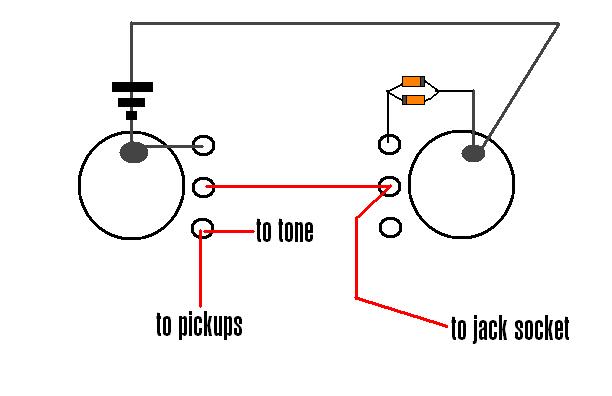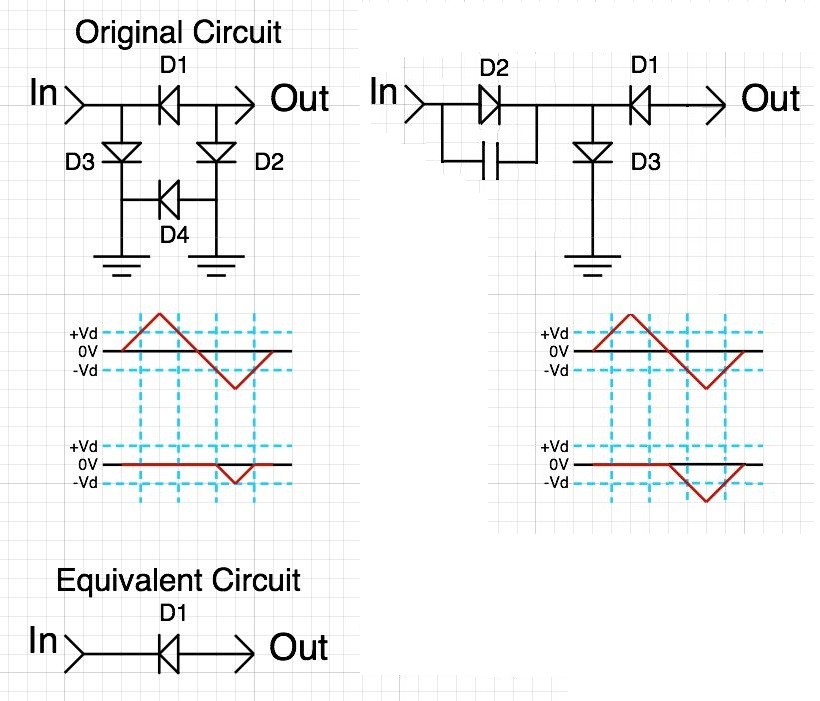Deleted
Deleted Member
Posts: 0
Likes:
|
Post by Deleted on May 19, 2019 11:28:29 GMT -5
(EDIT: moved by sumgai From Tone Controls to Effects Devices, 5/19/2019I read so much about this Black Ice and read that you can have 4 Diodes and 2 Diodes versions but where do they put it !! Seen some with a POT and then the Diode layout some just between the Volume and Jack  whats the point of D4 hanging between Two Grounds This one has its own Pot after the Volume  And this one is wired to the Tone Pot  StewMac Black Ice StewMac Black Ice this one is after the Volume.
|
|
|
|
Post by reTrEaD on May 23, 2019 16:18:18 GMT -5
I'm not sure why this was moved to Effects Devices. Black Ice is supposed to be inside a guitar, right? Maybe Guitar Wiring or Modules or something, idk. Anyway ... Let's look at the four-diode configuration you posted. I read so much about this Black Ice and read that you can have 4 Diodes and 2 Diodes versions but where do they put it !! Seen some with a POT and then the Diode layout some just between the Volume and Jack  whats the point of D4 hanging between Two Grounds Your 'Equivalent Circuit' is about right. To be completely accurate we should be using the exponential model of a diode to analyze, but the second-approximation (one-way valve with a source in series) will give us a reasonable idea of what's happening. Obviously D4 has no role in the circuit whatsoever.
D2 will never be forward-biased so it's basically useless too.
D3 will conduct when the positive-going half-cycle of the input waveform exceeds the threshold voltage of the diode. But none of that matters to the output of the circuit. D1 can't conduct on that half-cycle.
D1 is the only diode doing anything that matters to the output. It conducts on the negative half of the input cycle, but only after we exceed the diode threshold voltage. The waveforms you drew do a good job of displaying this.
Putting a diode in series with the signal from the pickups generally leads to horrible results. Even with a Schottky diode, the threshold voltage is very significant compared to the output from the pickups. When a loud note is played on the guitar, the duty cycle is less than one half. So you get a very buzzy sound. But what's even worse is that quieter notes don't produce any sound at all. The input signal never exceeds the threshold voltage of the diode. Ugh!
We could do something rather interesting with three diodes and a capacitor. We can make a cheap and dirty 'precision rectifier'. I still wouldn't use this inside a guitar, but it could be useful in a pedal where we can work with larger waveforms.  The capacitor charges through D 3 on the positive half of the input cycle. D 2 limits the voltage to which the capacitor can charge. When the input is at the zero voltage reverence and almost ready to go negative, the right hand side of D2 and the capacitor is at one diode threshold below zero. As soon as the input goes negative, D 1 will conduct. |
|